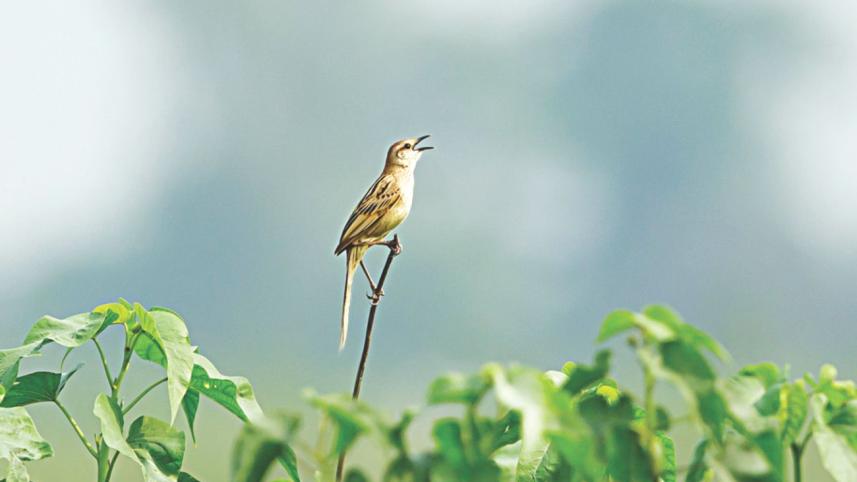Springtime in the Haor

The other day I visited Hail Haor in Moulvi Bazar. Haors are a geological feature of northern Bangladesh. These shallow, saucer-shaped areas submerge underwater in monsoon and dry up in winter. For example, waters of Hail Haor cover 13000 hectares in monsoon but only 3000 hectares in winter.
In addition to being home to many species of flora and fauna, Hail Haor's wetlands attract numerous birds, both migratory and resident. People of the Haor raise cattle and livestock and grow rice. Fishing is also important. In the few weeks of winter, grass and weeds grow rapidly and cover the newly emerged fields, creating grazing grounds for herds of water buffaloes. Their milk finds its way to the local mishti producers.
On this day, after the short but sweet winter, the spring day is longer and warmer. At the Haor, I immediately notice the frenetic activity, both man-made and natural. Water has receded from many parts which were submerged through the winter. Paddyfields are enveloped in the velvet green of rice. Bhat (cloredendrum inerme) flowers have bloomed in profusion, spreading a faint sweet scent in the air.
Many fisheries have drained out the water and are cleaning their ponds before refilling them. The insects and worms in the drying mud attract birds which peck at the soft soil, picking out earthworms or other morsels. These are the smaller birds: plovers, wagtails, ruffs.
The larger birds, particularly kites, fish eagles, and the solitary osprey wait patiently near water bodies, looking for fish to hunt. I see a massive Pallas's fish eagle – from the distance it looks like a small cow – as it waits on the bank of a fishery pond. Nearby a juvenile brahminy kite perches atop a banana plant, eating a fish.
Along the edge of the water dhol kolmi (ipomea fistulosa) bushes grow up to six feet tall. Their stalks break easily as I walk through the bush. At the edge of one such bush I see a striated grassbird. It is sitting at the very top, singing a loud, long and complicated song. Occasionally it shoots up in the air while singing and then slowly falls back to the ground, wings outstretched. This is the male bird's display while searching for a mate.
Another plant, called lippia, grows here in abundance. Crushing its leaves I smell an intense lemony fragrance. Lippia's essential oil has medicinal and cosmetic value. At one end of the Haor in Baikka Beel, a grove of koros (pongamia pinnata) trees wears a luxurious growth of silky new leaves.
A flock of babui (baya weaver) birds numbering in the hundreds emerges from another dhol kolmi bush and flies like an undulating wave to a paddy field. A mongoose scurries along the edge of the bush, looking for snakes.
The breeze, when it comes, refreshes and rejuvenates me under the warm sun. I have come to Hail Haor almost every year for the past eleven years. Every time it gives me a new surprise. This year, it springs life at me.
www.facebook.com/tangents.ikabir



 For all latest news, follow The Daily Star's Google News channel.
For all latest news, follow The Daily Star's Google News channel.
Comments